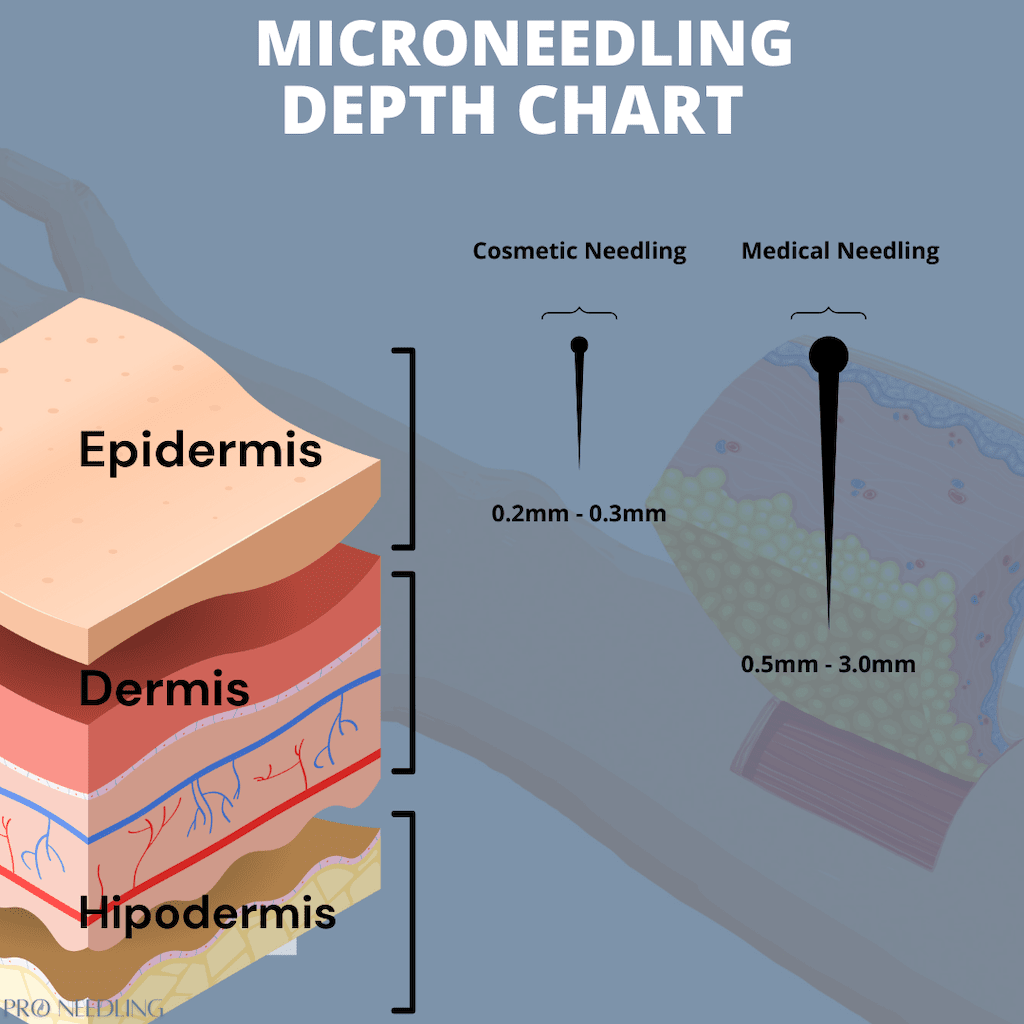As more and more patients turn to their own Microneedling DIY journey, questions arise about the most effective needle length to resolve their targeting issue. While it’s important to tailor and be aware of the needle depth needed to target your specific condition, it’s not just a simple set-and-forget protocol.
Before embarking on any skin treatments, it’s important to assess your own skin correctly as well as research the correct techniques to administer your treatment.
Please be aware that guides and charts like the ones below and other information found on the internet should just serve as a reference point.
The Correct Microneedling Depth
The correct microneedling depth or needle size should vary for each person. That is each microneedling treatment should be customized to the individual and their specific skin. The correct microneedling depth can be determined by the depth of the targeted skin condition within the individual receiving treatment.
There are a variety of factors why each situation is different.
- The issue targeted
- Texture and area of the skin
- The device being used (pen/roller/stamp)
- Accuracy, depth, speed, and pressure applied by the operator
Different areas of the skin vary in skin texture. Delicate or thin-skinned areas such as under the eyes or around the mouth don’t require as deep needling to provide results. Often male patients may have thicker skin than females.
Thicker skin areas such as the cheeks or issues such as stretch marks, acne scars, or scar tissue, generally require a more robust needle depth.
Devices vary in power and speed so it’s important to administer them properly to avoid injury. Be careful in harder-to-treat areas that arent flat surfaces like the nose and neck.
Its important to always start at a lower needle depth to gauge the pain threshold. You don’t want to overtreat areas, especially in thinned-skinned areas like around the bridge of the nose.

Microneedling Depth for Collagen Production
It’s long been thought that with collagen induction therapy (micronneedling), more aggressive needling would increase the wound healing response time and provide more effective results.
Studies have shown the opposite to be true, stating that shorter needle depths may be more beneficial due to the release of growth factors and increased product absorption.
A study in 2008, reported that collagen could be found at a depth of .6mm and that there was no benefit to using longer invasive needles. Another study found that newly built elastin and collagen fibers could occur at a depth of 0.6mm and that there are no additional benefits to needling at a depth below 1mm.
It’s important to note that priming your skin with nutrient-rich products before treatment such as Vitamin A and Vitamin E works well for increased collagen production.
Microneedling Depth Chart
Our recommended needle depth guide is sorted by regions, skin conditions, and needle depth in millimeters.
| Regions/Conditions | Needle Depth (mm) |
| Thin Skin | 0.2mm |
| Under The Eyes | 0.25mm |
| Lip Lines | 0.5mm |
| Wrinkles | 0.5mm – 1mm |
| Hyperpigmentation | .5mm – 1mm |
| Thin Scars | .5mm – 1mm |
| Chin | .5mm – 1mm |
| Neck | 0.5mm – 2mm |
| Acne Scars/ Burns | 2mm |
| Stretch marks | 2mm |

2 thoughts on “Microneedling Depth Guide”